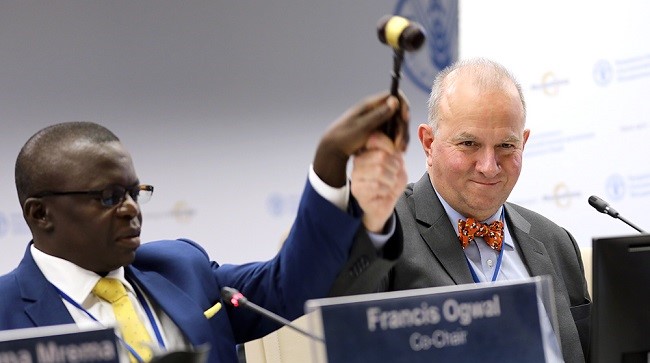Governments and stakeholders completed the first round of negotiations on the zero draft of a global framework on nature and people that seeks to bend the curve on biodiversity loss by 2030, with the goal of building a future of life in harmony with nature by the year 2050.

The second meeting of the Open-ended Working Group on the Post-2020 Global Biodiversity Framework ended in Rome, Italy on Saturday, February 29, 2020 with representatives of all levels of government and all stakeholders offering detailed comments and recommendations on the draft text of the global framework.
The Working Group’s contact groups produced detailed suggestions on all the aspects of the draft framework. While more discussion is needed to achieve consensus, delegates organised the results of their discussions according to the following themes:
- Goals of the framework, including the relationship between goals for 2030 and 2050;
- Ways to reduce threats to biodiversity, including new targets for protection, sustainable use and the control of invasive alien species, among others;
- Parties and observers welcomed the inclusion of an action target in the zero-draft framework that addresses climate change as a major direct driver of biodiversity loss and the interrelationship between biodiversity and climate change;
- Meeting people’s needs through sustainable use and benefit sharing; and,
- Tools and solutions for mainstreaming biodiversity across government, society and the economy.
Following the decision taken at the United Nations Biodiversity Conference held in Egypt in 2018, the framework is meant to be ambitious, not only in the goals and targets set, but also in providing the means, financial and otherwise, to achieve those goals, and in the mechanisms put in place to review progress.
The proposed balanced framework seeks to be relevant not only for the convention on biodiversity, but also for other international mechanisms and multilateral environmental agreements and all sectors necessary to address the direct and indirect drivers of biodiversity loss.
The framework also acknowledges the linkages between biodiversity loss and climate change by looking at the potential of nature/ecosystem-based solutions – where biodiversity can contribute to climate change mitigation and adaptation, to combating desertification and degraded land restoration, to food security, and to human health and well-being.
“I urge you to continue to pursue a “whole of government” approach and consult widely within your national ministries, within your regional organizations, and with the broadest engagement of all stakeholders. We need a wide consensus as we make our way down the road to Kunming in October,” said Elizabeth Maruma Mrema, the Acting Executive Secretary of the Convention on Biological Diversity (CBD).
“We are seeking nothing less than enabling the world to take the steps needed to bend the curve on biodiversity loss. In the face of such a task, we will need, as the saying goes, all the help we can get,” she added.
“This week saw governments and stakeholders adopt a constructive engagement with the zero draft of the Post-2020 Global Biodiversity Framework that we have prepared following regional consultations, submission of views and information from science. Through the discussions, we received many proposals on how to move forward to achieve the 2050 Vision of living in harmony with nature. We look forward to continued engagement with governments and stakeholders as we prepare the next draft of the framework,” said Francis Ogwal, Co-Chair of the Working Group.
“We have started our journey down the road to the fifteenth meeting of the Conference of the Parties in Kunming in October 2020 with all stakeholders demonstrating their commitment to building a future of life in harmony with nature,” said Basile van Havre, Co-Chair of the Working Group.
Next Steps
In May, the Subsidiary Body on Scientific, Technical and Technological Advice (SBSTTA) of the Convention will carry out a scientific and technical review of the draft goals and targets, and related indicators and baselines, while the Subsidiary Body on Implementation will address questions on implementation of the Global Biodiversity Framework.
Following these reviews, the Co-Chairs of the Working Group and the Executive Secretary will prepare a new draft of the Global Biodiversity Framework for consideration by the third meeting of the Working Group, scheduled to be held in Cali, Colombia.
The results of that meeting will be transmitted to the United Nations Biodiversity Conference, which will be held in Kunming, China from October 15 to 28, 2020.
